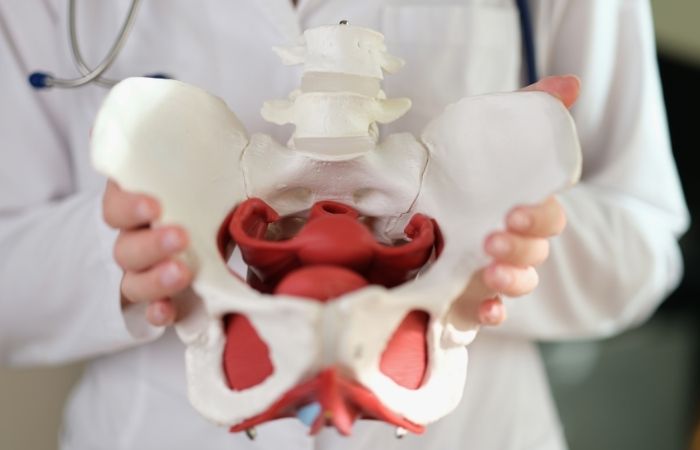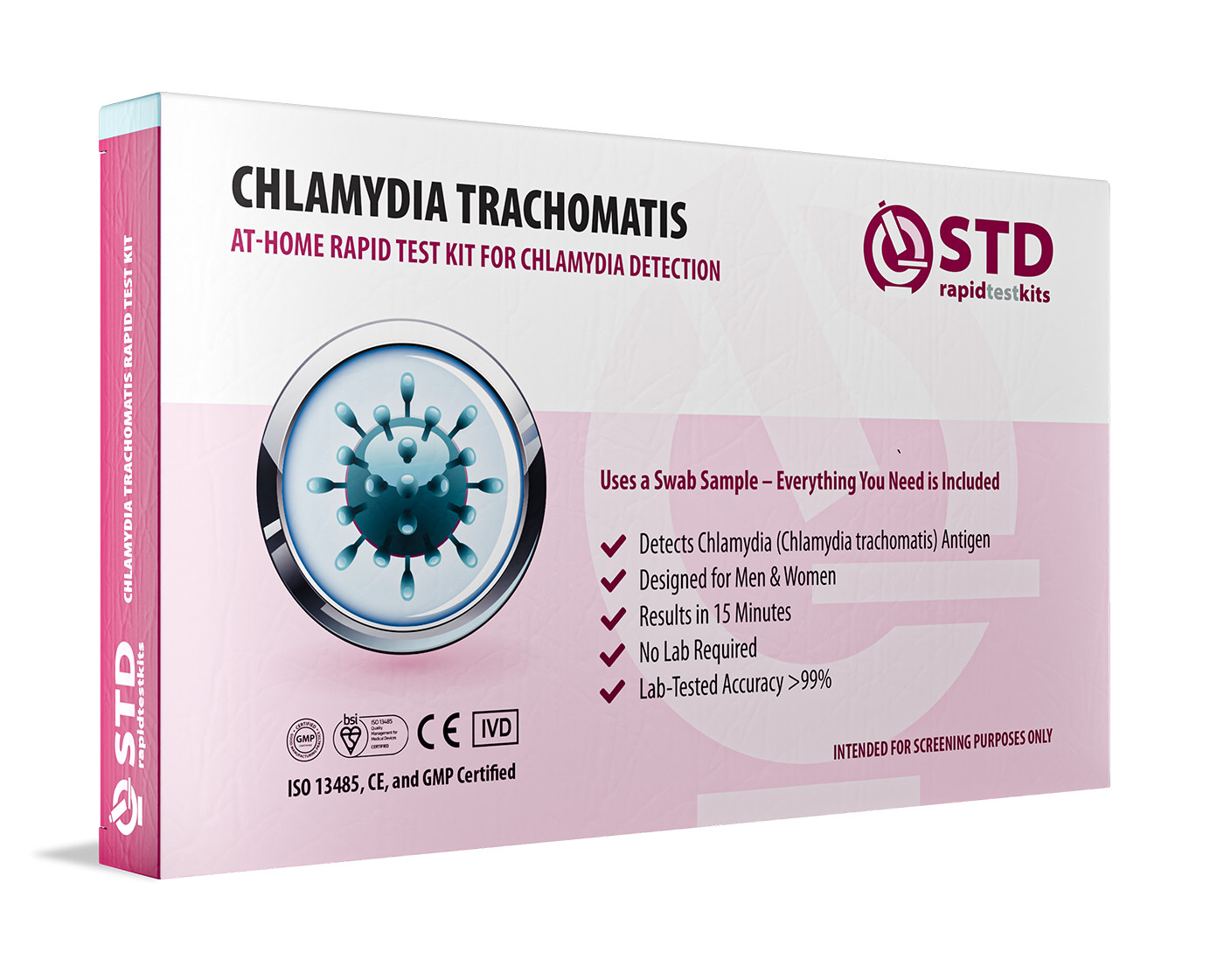STD Red Flags: When That Itch, Bump, or Burn Means Something Serious
It’s Not Just “A Little Burning”: Why Chlamydia Is So Dangerous
Chlamydia has a reputation for being mild, something many people think will “clear up on its own.” But here’s the real talk: this infection can do serious internal damage before you even know it’s there.
In people with uteruses, chlamydia often starts in the cervix and silently creeps upward into the uterus, fallopian tubes, and ovaries. This spread can lead to pelvic inflammatory disease (PID), a condition that scars and blocks the reproductive organs. Even one untreated infection can lower your chances of conceiving.
In people with penises, it’s just as risky. Chlamydia can infect the urethra and cause a painful inflammation of the epididymis (a tube near the testicles), potentially leading to fertility issues. The damage may not be immediately noticeable, but it can reduce sperm quality and affect reproductive success later on.

People are also looking for: What is the most dangerous sex act for getting an STD?
When Silence Hurts: The Problem with Symptom-Free Infections
Here’s the kicker: 70% of women and 50% of men with chlamydia don’t notice any symptoms at all. No burning. No discharge. Nothing to tip you off that something’s going wrong.
And that’s exactly how it causes the most harm. While it quietly lingers, it keeps spreading and damaging delicate reproductive tissue. By the time someone feels pain or irritation, the real damage, scarring, inflammation, or blocked tubes, may already be underway.
This “silent phase” is the most dangerous part. It delays diagnosis, allows transmission to partners, and often lets the infection linger long enough to impact fertility permanently.
How Chlamydia Hijacks Fertility, Without You Realizing It
Fertility isn’t just about eggs and sperm, it’s about timing, anatomy, and the ability of reproductive organs to communicate. Chlamydia disrupts all of that.
In women, PID triggered by chlamydia can block fallopian tubes, preventing the egg and sperm from meeting. Or worse: it can cause an ectopic pregnancy, where a fertilized egg implants outside the uterus, dangerous and non-viable. In men, inflammation from untreated chlamydia may damage sperm DNA or create blockages in the vas deferens, limiting fertility without obvious symptoms.
The irony? Most people with chlamydia think they’re “fine”, until they start trying to get pregnant and discover it’s not happening.
Check Your STD Status in Minutes
Test at Home with RemediumChlamydia Test Kit

 For Men & Women
For Men & Women Results in Minutes
Results in Minutes No Lab Needed
No Lab Needed Private & Discreet
Private & DiscreetOrder Now $33.99 $49.00
Not Just a “Female Problem”: Chlamydia and Male Fertility
Let’s smash a myth right now: chlamydia doesn’t just mess with female fertility. Men can suffer reproductive consequences too, and they’re often left out of the conversation.
In males, chlamydia can cause epididymitis, which may damage sperm or cause chronic testicular pain. Worse, the infection can persist in the prostate or urethra, lowering sperm count and motility. Some men only discover a past infection when their fertility is under investigation, and by then, the damage may already be done.
Testing and early treatment are crucial. Even if you feel “totally normal,” one round of antibiotics now can protect your chances of becoming a parent later.
Why Most People Don’t Get Tested Until It’s Too Late
Shame. Stigma. A false sense of security. These are the reasons chlamydia slips through the cracks.
Many people believe if they don’t feel symptoms, they don’t need to test. Others are afraid to ask for an STD test because of what it might “mean” about them. But here’s the reality: testing isn’t about judgment, it’s about prevention.
Chlamydia is common, curable, and preventable. But none of that matters if it’s never detected. Annual testing (or more often if you're sexually active with multiple partners) is the only way to stay ahead of this silent saboteur.
Fertility Isn’t the Only Thing at Stake
While the headline risk is infertility, chlamydia’s damage doesn’t stop there. It can also increase your risk of other reproductive health issues, including chronic pelvic pain, ectopic pregnancy, and even complications in future pregnancies.
In pregnant people, undiagnosed chlamydia can be passed to the baby during delivery, causing eye infections or pneumonia in newborns. And in both men and women, untreated infections make it easier to acquire or transmit HIV, due to inflammation and compromised mucous membranes.
This isn’t just about baby-making, it’s about protecting your whole reproductive system for the long haul.

People are also looking for: How Long Can You Have Chlamydia Without Knowing?
The Data Doesn’t Lie: Chlamydia and Infertility Rates
Let’s talk numbers. According to the CDC, chlamydia is the most commonly reported bacterial STD in the United States, with over 1.6 million cases annually. But experts estimate that the real number is much higher because so many people never get tested.
A study published in the journal Sexually Transmitted Diseases found that up to 20% of women who develop PID from chlamydia will become infertile. And even one untreated infection can cause lasting damage. Another report in The Lancet Infectious Diseases confirmed that chlamydia is a leading cause of tubal factor infertility worldwide.
Translation? It’s not rare. It’s not dramatic. It’s disturbingly common, and it’s preventable.
Real Stories: “I Didn’t Know Until It Was Too Late”
“I didn’t have any signs at all. I only found out when we started fertility treatments. The doctor said my fallopian tubes were blocked, likely from an untreated infection years ago. It was devastating.” – Maria, 34
“My partner tested positive, so I got checked too. I felt fine. But turns out I had it too. I’m so glad I caught it early, our doctor said it could’ve hurt my sperm if it kept going.” – Jared, 28
These aren’t rare exceptions, they’re just the ones who found out. Many never do. That’s why proactive testing is so important, even if you feel “fine.”
Early Detection = Damage Prevention
Here’s the good news: chlamydia is completely curable with a simple round of antibiotics. The challenge is catching it before it causes permanent damage. That’s why regular testing is the real power move.
If you’re sexually active, especially with new or multiple partners, don’t wait for symptoms. If you’re thinking about having kids someday, get ahead of it now. A chlamydia test kit can be done discreetly from home, no doctor’s office or awkward waiting room required.
And if you do test positive? It’s okay. It’s treatable. You’re not broken, you just need support and good care.
Check Your STD Status in Minutes
Test at Home with Remedium3-in-1 STD Test Kit

 For Men & Women
For Men & Women Results in Minutes
Results in Minutes No Lab Needed
No Lab Needed Private & Discreet
Private & DiscreetOrder Now $69.00 $147.00
For all 3 tests
The Test That Could Save Your Future Family
You can’t undo the past, but you can control what happens next. Testing is private, affordable, and shockingly easy these days. At-home kits allow you to collect your sample, mail it in, and get results online in just a few days.
Think of it this way: getting tested today could save you from months or years of heartbreak later. Whether you’re trying to conceive or just playing the long game, this test is a simple, powerful step toward protecting your future family.
Don’t let silence steal your fertility. Take action. Take the test.
Common Misconceptions About Chlamydia and Fertility
Even in 2025, misinformation about chlamydia is still rampant. Let’s set the record straight on a few things:
“If I had chlamydia, I would’ve known.”
Not necessarily. Most people experience no symptoms. That’s exactly why it causes so much hidden damage.
“Only women need to worry about infertility.”
Wrong. Chlamydia affects male fertility too, through inflammation, scarring, and sperm DNA damage.
“You can only get chlamydia from penetrative sex.”
Nope. Oral, anal, and even shared sex toys can transmit the infection. Barrier methods help, but they’re not foolproof.
“Once it’s treated, the damage goes away.”
Treatment stops the infection, but it doesn’t reverse scarring or fertility loss that may have already occurred.
That’s why prevention and early testing matter way more than waiting for symptoms to appear.
FAQs
1. Can chlamydia really cause infertility after just one infection?
Yes. Even one untreated chlamydia infection can lead to PID or damage sperm production. Early detection is critical.
2. How long can I have chlamydia without knowing?
People can carry it for months, or even years, without symptoms. Many only find out during fertility evaluations or routine screening.
3. Is the damage from chlamydia reversible?
The infection can be cured, but scar tissue and blocked reproductive pathways are usually permanent. That's why early testing is essential.
4. Do condoms completely prevent chlamydia?
Condoms lower the risk significantly but don’t eliminate it. Skin-to-skin transmission and contact with infected fluids can still occur.
5. Should I get tested even if I feel totally fine?
Yes. Most cases of chlamydia are asymptomatic. If you're sexually active, especially with new partners, testing is a smart and responsible choice.
6. How often should I test for chlamydia?
Once a year is recommended for most sexually active people. If you have new or multiple partners, test every 3–6 months.
7. Can men become infertile from chlamydia?
Absolutely. Chlamydia can damage the epididymis and reduce sperm quality, which may lower fertility or cause chronic inflammation.
8. Is it possible to get chlamydia again after treatment?
Yes. There’s no immunity. You can get re-infected if a partner hasn’t been treated or through new exposure.
9. Can I get tested at home?
Yes! At-home kits like the Chlamydia Home Test Kit offer safe, discreet testing from the privacy of your home.
10. What if I test positive?
Don’t panic. Chlamydia is treatable with antibiotics. Make sure your partner gets treated too, and follow up with a test-of-cure if recommended.
Sources
2. Chlamydia trachomatis and infertility - NIH
3. Sexually Transmitted Infections - WHO
4. Pelvic Inflammatory Disease - Mayo Clinic
5. The global burden of chlamydia on reproductive health - The Lancet










